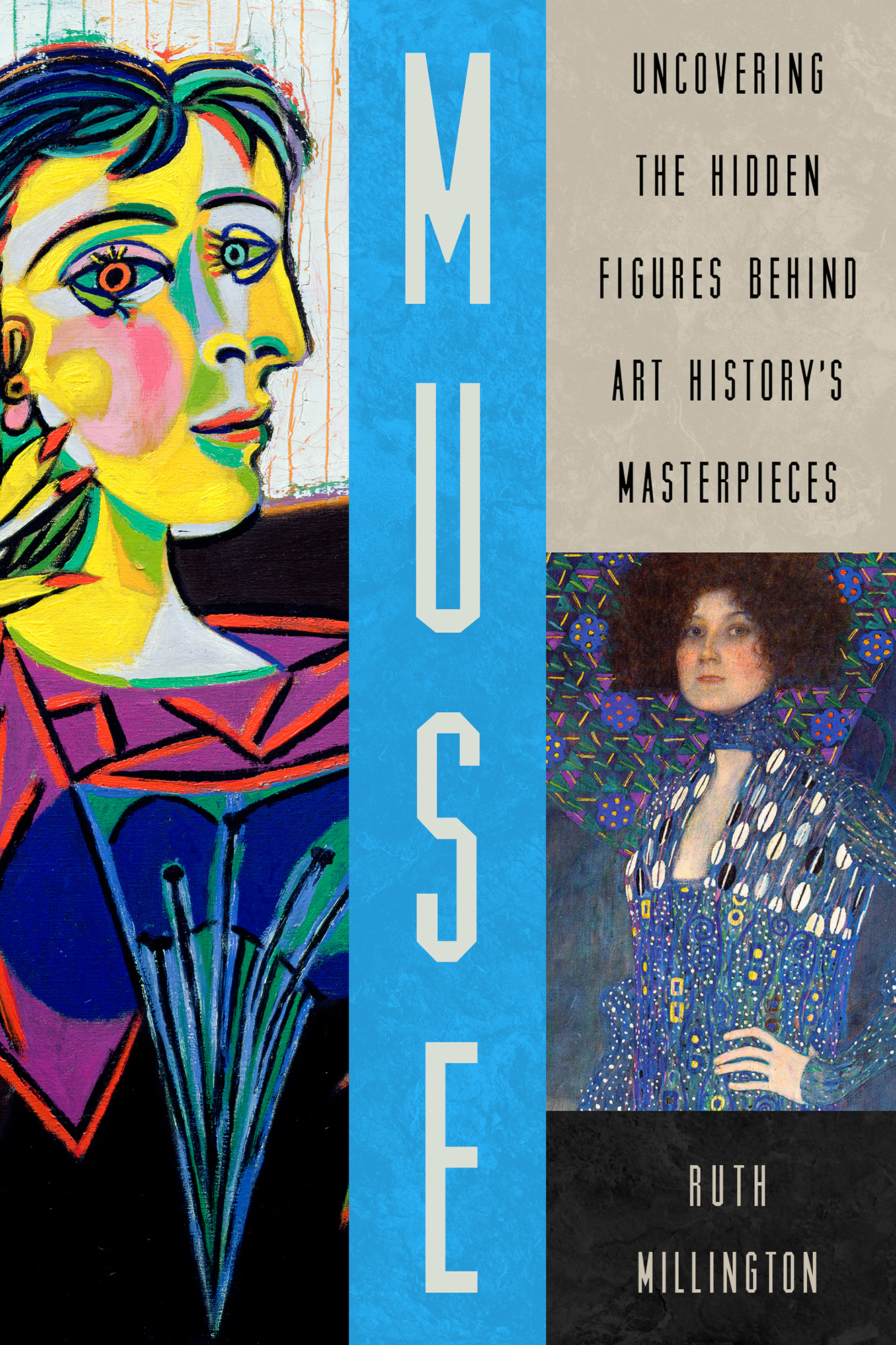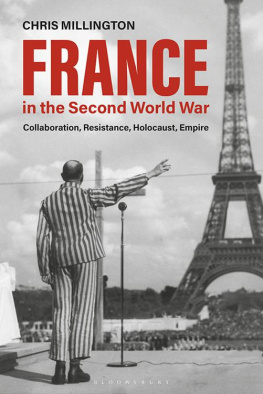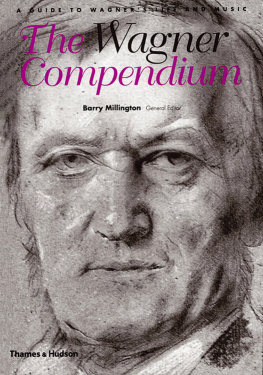Ruth Millington - Muse: Uncovering the Hidden Figures Behind Art Historys Masterpieces
Here you can read online Ruth Millington - Muse: Uncovering the Hidden Figures Behind Art Historys Masterpieces full text of the book (entire story) in english for free. Download pdf and epub, get meaning, cover and reviews about this ebook. year: 2022, publisher: Pegasus Books, genre: Non-fiction. Description of the work, (preface) as well as reviews are available. Best literature library LitArk.com created for fans of good reading and offers a wide selection of genres:
Romance novel
Science fiction
Adventure
Detective
Science
History
Home and family
Prose
Art
Politics
Computer
Non-fiction
Religion
Business
Children
Humor
Choose a favorite category and find really read worthwhile books. Enjoy immersion in the world of imagination, feel the emotions of the characters or learn something new for yourself, make an fascinating discovery.

- Book:Muse: Uncovering the Hidden Figures Behind Art Historys Masterpieces
- Author:
- Publisher:Pegasus Books
- Genre:
- Year:2022
- Rating:4 / 5
- Favourites:Add to favourites
- Your mark:
- 80
- 1
- 2
- 3
- 4
- 5
Muse: Uncovering the Hidden Figures Behind Art Historys Masterpieces: summary, description and annotation
We offer to read an annotation, description, summary or preface (depends on what the author of the book "Muse: Uncovering the Hidden Figures Behind Art Historys Masterpieces" wrote himself). If you haven't found the necessary information about the book — write in the comments, we will try to find it.
Ruth Millington: author's other books
Who wrote Muse: Uncovering the Hidden Figures Behind Art Historys Masterpieces? Find out the surname, the name of the author of the book and a list of all author's works by series.
Muse: Uncovering the Hidden Figures Behind Art Historys Masterpieces — read online for free the complete book (whole text) full work
Below is the text of the book, divided by pages. System saving the place of the last page read, allows you to conveniently read the book "Muse: Uncovering the Hidden Figures Behind Art Historys Masterpieces" online for free, without having to search again every time where you left off. Put a bookmark, and you can go to the page where you finished reading at any time.
Font size:
Interval:
Bookmark:

Muse
Uncovering the Hidden Figures Behind Art Historys Masterpieces
Ruth Millington

For Julia and Lily

J ohannes Vermeers Girl with a Pearl Earring (c.1665) is one of the most famous paintings in the world, and also one of the most mysterious. Who is this girl, dressed in an unusual blue-and-gold headscarf, with her iconic pearl earring? Why does she stare out of the canvas in such an enigmatic way? What was her relationship with the artist? No one knows for certain, and this secrecy only adds to her allure.
The much-debated identity of Vermeers model inspired Tracy Chevalier to write the best-selling historical novel, Girl with a Pearl Earring, which tells a fictitious story behind the painting. Set in seventeenth-century Holland, it follows the narrative of Griet, a sixteen-year-old Dutch girl who becomes a maid in the house of the successful painter. From his studio, the artist paints solitary women in domestic settings, illuminated by brilliant sunlight. Griet is quiet and calm; she is also beautiful and perceptive, and soon attracts Vermeers attention. The very first time they meet, he notices the way that she has arranged the vegetables she is chopping:
I see that you have separated the whites, he said, indicating the turnips and onions. And then the orange, and the purple, they do not sit together. Why is that?
The colours fight when they are side by side, sir.
It is a significant moment, revealing an intimate connection between Vermeer and Griet, who shares his understanding of colour. Alongside her household duties, the artist teaches his maid to make paint, drawing her into his world. Its not long before Griet becomes his next subject: she sits for the notorious painting, wearing his wealthy wifes pearl earring, with her hair tied up in the striking headscarf. Griet has become the artists muse, the source of his creative inspiration.
This stereotypical artistmuse relationship portrayed in Chevaliers story is one that is embedded in our consciousness: Griet plays the role of a young, attractive, female muse, existing at the mercy of an influential, older male artist. While she shares Vermeers artistic sensibility, as his maid, Griet must surrender to his control. Nowhere is this made clearer than in the moment Vermeer pierces her earlobe so that Griet can wear the pearl earring; she endures pain for the sake of the portrait.
Chevalier also submits Griet to the trope of the romantic muse, lacing her narrative with sexual tension and emphasising physical touch between the pair: I could not think of anything but his fingers on my neck, his thumb on my lips. She inspires this man in ways that his wife cannot, and an intimacy develops between the maid and Vermeer that ultimately gives power to his painting. In 2003, Chevaliers book was adapted into a film, starring Scarlett Johansson as Griet against Colin Firths moody Vermeer. Johanssons sensual portrayal of the servant girl only perpetuates the stereotype of an artistmuse relationship defined by female subordination to male authority. Open your mouth. Now lick your lips, the artist demands, and she silently obeys, perfectly playing the part of compliant muse.
But is this perception of a muse as powerless, submissive and female accurate? Or could this characterisation actually be somewhat lazy and untrue? Have muses had more agency than we give them credit for? To find out, we must go back to Ancient Greece to understand the original identity, purpose and status of the muse but, first, we should also take a look at the Disney 1997 animated feature film, Hercules.
We are the muses, goddesses of the arts and proclaimers of heroes, declare five sassy, gospel-singing female figures. Calliope, Clio, Melpomene, Terpsichore and Thalia step out from the ancient vase on which they have been painted to tell the story of Hercules and his heroism. Awakened as goddesses of poetic inspiration, the film portrays them as skilled storytellers, and its not wrong.
In Greek mythology, there were nine female muses. They were the children of Zeus, King of the Gods, and Mnemosyne, Titaness of memory and artistic inspiration. Born at the foot of Mount Olympus, the muses were gifted goddesses of the arts: music, dance, song, poetry and memory. Ancient Greek vase painting depicts them as animated young women, playing musical instruments, singing and reading from scrolls. Invoked by mortals, the muses inspired musicians, artists and writers, all of whom depended on them for divine creativity, wisdom and insight.
The Greek writer Hesiod claimed in his poem Theogony to have spoken with the muses, who turned him from a simple shepherd into a blessed poet: The Muses once taught Hesiod to sing / Sweet Songs. Similarly, narrators of epic poems appealed to a muse, or multiple muses, without whom they could not start their story. Sing, goddess is the opening invocation with which poets made clear that their performance relied on direct communication with a muse, who had taught or told them the tale to be repeated. As Homer begins The Odyssey:
Tell me about a complicated man.
Muse, tell me how he wandered and was lost
when he had wrecked the holy town of Troy,
and where he went, and who he met, the pain
he suffered in the storms at sea, and how
he worked to save his life and bring his men
back home. He failed to keep them safe; poor fools,
they ate the Sun Gods cattle, and the god
kept them from home. Now goddess, child of Zeus,
tell the old story for our modern times.
Find the beginning.
At their ancient origin, the muses were far from passive subjects for an artist to paint or write about. Instead, they were agents of divine inspiration. The artistmuse relationship was one that was revered, and poets, at their mercy, paid homage to these divinities.
The Ancient Greeks have not been the only ones to question the source of creativity, and attribute it to a higher being. In Hinduism, Saraswati is the goddess of music, learning, art and wisdom, and since c.1500 BCE she has featured in paintings and relief sculpture on Hindu temples. In each of her four hands Saraswati holds a symbolic object: a book signifies knowledge, mala beads evoke meditation, a water pot embodies the source of creation, and the ancient string instrument, the veena, represents her gift of music to humanity. Nevertheless, the muse is predominantly a Western concept one which has evolved dramatically over time, particularly throughout European art history.
During the Italian Renaissance, the likes of Titian, Tintoretto and Mantegna drew on ancient Greek culture to paint allegorical masterpieces in which muses came to symbolise the rebirth of the arts. They appear frequently as joyful young women, dancing and playing music in mythical forests, providing inspiration to those around them. However, there was also a significant shift in the portrayal of muses during the Renaissance: frequently, their drapes and dresses have fallen away to reveal bare bodies, painted in soft, fleshy tones. These nubile nudes appear as seductive mistresses, feeding the fantasy of men, both in and outside of the picture frame. We find that muses have become icons of idealised and sexualised beauty.
Font size:
Interval:
Bookmark:
Similar books «Muse: Uncovering the Hidden Figures Behind Art Historys Masterpieces»
Look at similar books to Muse: Uncovering the Hidden Figures Behind Art Historys Masterpieces. We have selected literature similar in name and meaning in the hope of providing readers with more options to find new, interesting, not yet read works.
Discussion, reviews of the book Muse: Uncovering the Hidden Figures Behind Art Historys Masterpieces and just readers' own opinions. Leave your comments, write what you think about the work, its meaning or the main characters. Specify what exactly you liked and what you didn't like, and why you think so.






